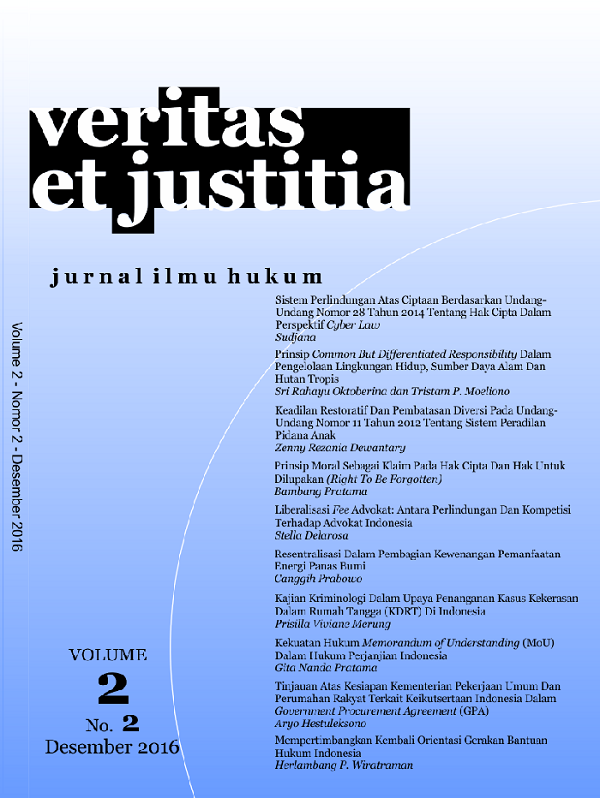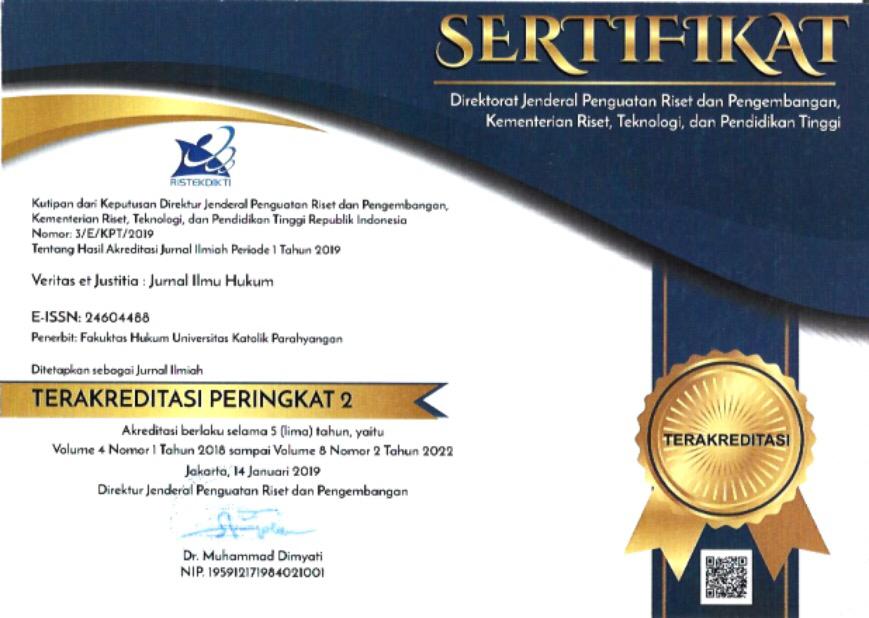Keadilan Restoratif Dan Pembatasan Diversi Pada Undang-Undang Nomor 11 Tahun 2012 Tentang Sistem Peradilan Pidana Anak
DOI:
https://doi.org/10.25123/vej.v2i2.2269Keywords:
Juvenile Court System, Diversion, Restorative JusticeAbstract
Abstract
Since 1997 Indonesia possessed a Law specifically regulating child court (Law No. 3 of 1997). The law’s perspective, however, was still based on retributive justice. This was apparent in how the court handles juvenile delinquents. To provide better protection to the handling of children before criminal courts, the government amended Law No. 3 of 1997 by Law No. 11 of 2012 re. Juvenile Court System. This new law was founded upon the theory of restorative justice and provide for diversion. Diversion is used to prevent children from being sent to prison and in general purports to improve societal condition. This article discusses problems related to the use of diversion. One recommendation offered is that diversion should be taken into consideration without discrimination, not only in the case the penal sanction is below 7 years (imprisonment) but also above this number. In deciding the need for diversion, while also taking into consideration the seriousness of the crime committed, expediency should also be a deciding factor.Downloads
Published
Issue
Section
License
Authors who publish with this journal agree to the following terms:
Authors retain copyright and grant the journal right of first publication with the work simultaneously licensed under a Creative Commons Attribution License that allows others to share the work with an acknowledgement of the work's authorship and initial publication in this journal.
Authors are able to enter into separate, additional contractual arrangements for the non-exclusive distribution of the journal's published version of the work (e.g., post it to an institutional repository or publish it in a book), with an acknowledgement of its initial publication in this journal.
Authors are permitted and encouraged to post their work online (e.g., in institutional repositories or on their website) prior to and during the submission process, as it can lead to productive exchanges, as well as earlier and greater citation of published work.
The Journal allow the author(s) to hold the copyright and to retian publishing rights without restrictions.










